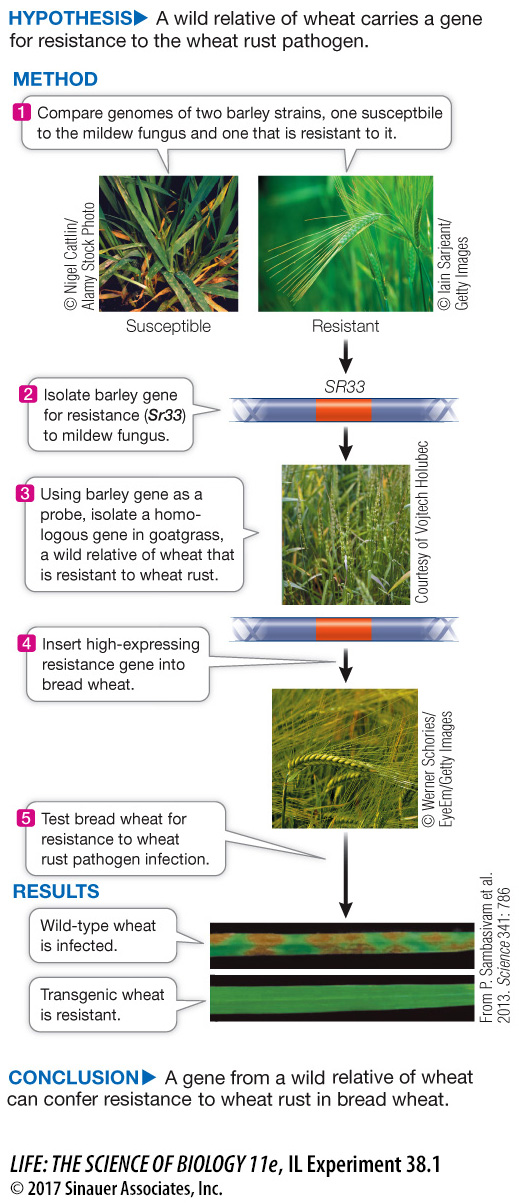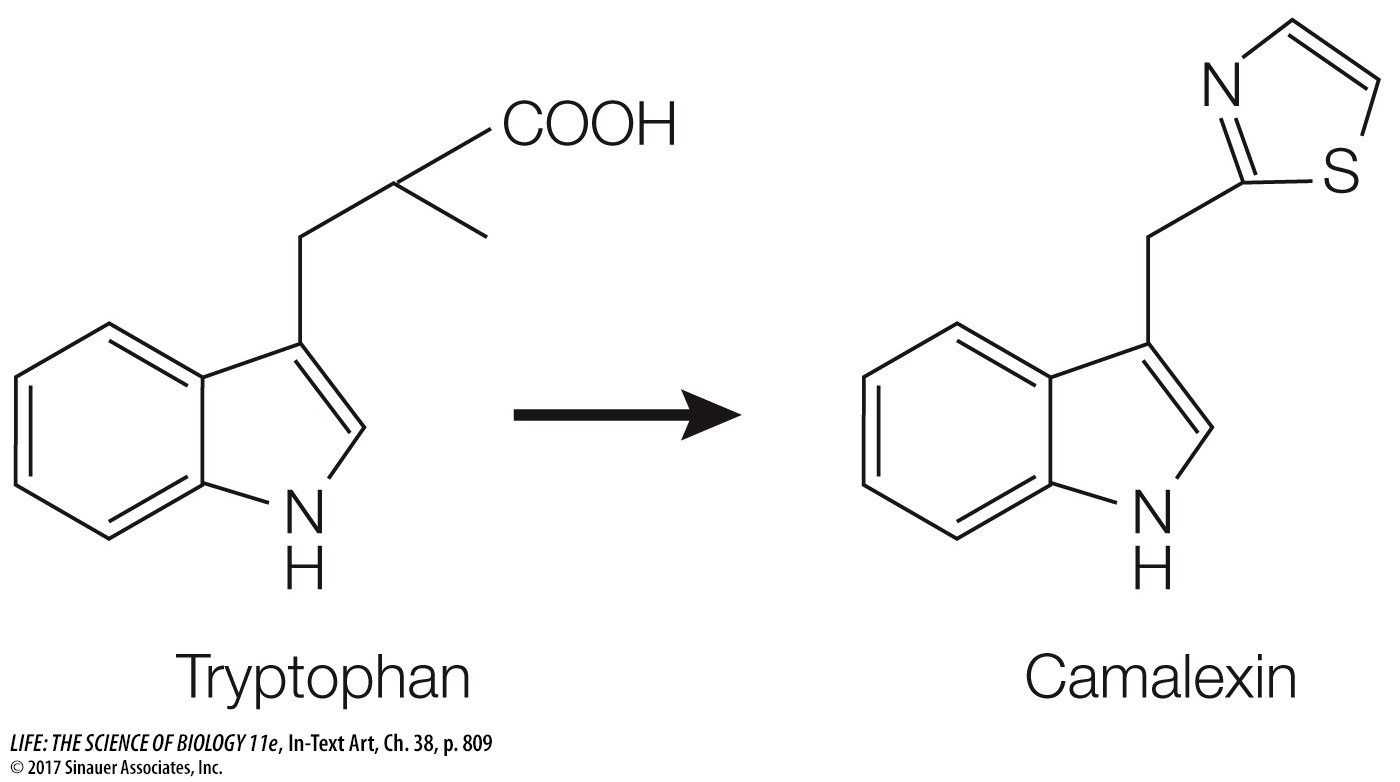General and specific immunity both involve multiple responses
Many of the signaling pathways associated with general and specific immunity are the same, although the latter is specific for particular pathogens in particular plants, and is much stronger than general immunity. Both forms of immunity involve signaling pathways that are triggered by binding between the elicitors (either PAMPs or effectors) and their receptors. These pathways lead to various responses:
Formation of reactive oxygen and NO: Receptor binding triggers the rapid production of nitric oxide (NO) and reactive oxygen species such as superoxide and hydrogen peroxide. These reactive molecules are toxic to some pathogens, and they are components of signal transduction pathways leading to local and systemic (plantwide) defenses.
Callose deposition: The β-1,3-
glucan polymer callose is deposited on the inside of the cell wall to strengthen the wall and seal off the cell. Hormone signaling: Some pathways result in the production of plant hormones, including salicylic acid and jasmonic acid. We will describe the roles of these hormones in immunity later in the chapter.
Changes in gene expression: Signal transduction cascades lead to changes in gene expression. The upregulated genes include pathogenesis-
related (PR) genes and genes encoding the production of antimicrobial substances called phytoalexins.
investigating life
A Gene for Resistance to Wheat Rust
experiment
Original Papers: Sambasivam, P. et al. 2013. The gene Sr33, an ortholog of barley Mla genes, encodes resistance to wheat stem rust race Ug99. Science 341: 786–
Saintenac, A. et al. 2013. Identification of wheat gene Sr35 that confers resistance to Ug99 stem rust race group. Science 341: 783–
Wheat rust, particularly the new strain Ug99 (see the opening investigation of this chapter), is a major pathogen of wheat that can cause significant reduction in grain production. Cultivated wheat is not resistant to this pathogen strain. But Aegilops tauschii, a species of goatgrass that grows in the wild and is a genetic relative of cultivated wheat, is resistant. An international research team isolated a gene called Sr33 that was responsible for this resistance. The gene encodes a cytoplasmic receptor. Meanwhile, Eduard Akhunov at Kansas State University studied another primitive relative of bread wheat called Triticum monococcum, which also is resistant to wheat rust. His team isolated another gene for resistance, called Sr35.

work with the data
A series of mutations in Sr33 was generated by mutagenesis and a genetic screen was performed for susceptibility to wheat rust infection (Figure A). The white bars indicate the deleted DNA, and the map location of the Sr33 gene is noted between the brackets.

QUESTIONS
1.
The results for the wild-
Wild-
2.
The bread wheat strain called Fielder was made transgenic for a high-
Fielder with high-
3.
Triticum monococcum with wild-
Sr35 confers resistance in this relative of cultivated wheat.
4.
Cultivated Fielder bread wheat was made transgenic for a high-
Sr35 also confers resistance in bread wheat. Therefore there are two genes that can confer resistance.
A similar work with the data exercise may be assigned in LaunchPad.
PHYTOALEXINS Phytoalexins are antibiotics produced by infected plants and are toxic to many fungi and bacteria. Most are small molecules, and each is made by only a few plant species. They are elicited by effectors of pathogenic bacteria and fungi and are made within hours of the onset of infection. Because their antimicrobial activity is nonspecific, phytoalexins can destroy many species of fungi and bacteria in addition to the one that originally triggered their production. Some phytoalexins can also kill the plant cells that produced them, thus sealing off the infection site (the hypersensitive response, discussed below).
An example of a phytoalexin is camalexin, made by the model organism Arabidopsis thaliana. Its production is induced by a conserved *protein kinase cascade that is triggered by receptor binding in either general or specific immunity. This protein kinase cascade results in the upregulation of genes encoding enzymes that convert the amino acid tryptophan to camalexin:

Camalexin appears to work by disrupting the cell membranes of invading pathogens.
*connect the concepts Protein kinase cascades are common in signal transduction. See Key Concept 7.3.
PATHOGENESIS-
Another class of PR proteins are the plant defensins, which are similar to defensins produced by animals (see Key Concept 41.2). These small peptides bind to fungal membranes and are toxic to a wide range of fungal targets, but they are not toxic to plant or animal cells. Other PR proteins may serve as alarm signals to plant cells that have not yet been attacked. In general, PR proteins appear not to be rapid-